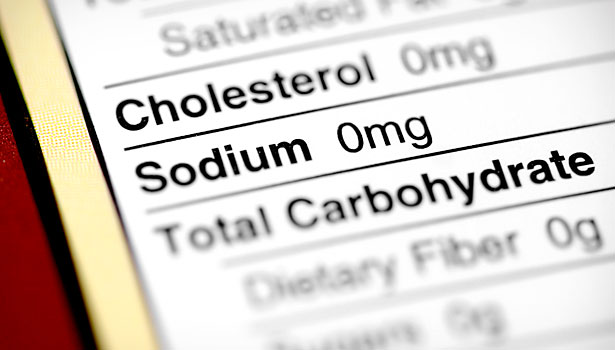 The merchandising of lower-sodium selections is becoming an increasingly prominent food retailing initiative. Moving to capitalize on the growing shopper focus on eating healthy, operators are making low-sodium foods prevalent — in the center store.
The merchandising of lower-sodium selections is becoming an increasingly prominent food retailing initiative. Moving to capitalize on the growing shopper focus on eating healthy, operators are making low-sodium foods prevalent — in the center store.
Yet getting retailers to market, and consumers to embrace, low-sodium varieties in the meat, deli and seafood departments is becoming more of a challenge. Fresh proteins are typically perceived as being healthier than processed foods, giving operators less incentive to try to bolster revenues with health claims that go beyond the typical “low fat” and “natural and organic” monikers.
Many marketers also are concerned that reductions in sodium will alter the taste and quality of proteins, which could hamper overall category sales.
Still, because sodium is an important health concern for some shopper segments — particularly aging baby boomers — it remains on the radar of perimeter department operators. Indeed, low-sodium will likely become omnipresent in meat departments as more retailers offer value-added items, analysts say.
In the meantime, sales are tepid. Low-sodium proteins accounted for less than 1 percent of total meat department dollar sales for the 52 weeks ended April 26, 2014, reports Nielsen Perishables Group, a Chicago-based market research company focusing on fresh foods. Dollar sales totaled $185 million, up 8.8 percent from the year-earlier period. Volume sales were 42 million pounds, a 1.4-percent decrease. An average price increase of 10.3 percent was instrumental in driving revenues.
The vast majority of low-sodium meat revenues was generated by bacon (83.9 percent of sales), followed by lunch meats (7.7 percent), value-added beef (4.8 percent), sausage (2 percent), ham (1.4 percent) and frankfurters (0.2 percent).
Among perimeter departments, the deli is generating the most low-sodium activity. Items with the claim accounted for about 2 percent of overall sales for the 52 weeks ended April 26, 2014. Low-sodium deli meats comprised about 1.6 percent of total deli meat revenues and 1 percent of deli meat volume sales.
The largest sector contributors were turkey (generating 44 percent of low-sodium deli meat revenues), ham (37.9 percent), chicken (5.6 percent), rotisserie chicken (4.3 percent), bologna (2.1 percent), beef (1.6 percent) and salami (1.4 percent).
Dollar sales for low-sodium deli meats totaled $272 million, up 1.4 percent from the year-earlier period. Volume was 34 million pounds, a 0.4 percent increase. The total average retail price of low-sodium deli meats rose 1.1 percent versus the year-earlier period.
Sherry Frey, Nielsen Perishables Group vice president of account services, says more shoppers will be seeking lower-sodium options in meat departments as retailers expand their arrays of convenience selections, such as marinated meats.
“There is consumer interest in low-sodium as it is the seventh-largest healthy claim across the entire store,” Frey states. Foods with the low-sodium or sodium-free labels accounted for $22.8 billion in total food sales over the last year, trailing such claims as “low-fat” and “gluten-free.”
“There remains a lot of focus in the sector from manufacturers as more consumers are beginning to understand how much sodium they should be consuming,” she says. “And as sodium gets more attention from center-store vendors, it will generate additional interest in shoppers.”
Because fresh foods are perceived by most consumers as the healthiest options in supermarkets, shopper concerns about sodium in proteins will predominantly center on products with preservatives, Frey states.
“Fresh has more of a halo effect,” she says. “Sodium content will be scrutinized more closely as additional value-added and convenient products are created.”
The launch of lower-sodium selections in the perimeter departments, meanwhile, will primarily be driven by retailers. Indeed, Nielsen Perishables Group notes that private label already is the leading low-sodium brand in the meat department.
“We will continue to see the growth of convenience items in the perimeter,” Frey says. “Such foods that are processed will naturally lead to a greater emphasis on low sodium and healthfulness.”
While low-sodium options are likely to become more prominent in the meat, deli and seafood departments, shoppers’ overall focus on the claim is likely to decrease as newer health issues grab their attention.
NPD Group Inc., a Port Washington, N.Y.-based consumer market research firm, reports that just 29 percent of consumers agree that shoppers should be cautious about foods that are high in salt, down from 43 percent in 1985. In 2013, 30 percent of individuals in a two-week period ate a product labeled “reduced salt” or “reduced sodium,” versus 60 percent in 1992.
“The greatest concern about low sodium was in the 1980s,” says Harry Balzer, NPD Group chief industry analyst. “But attitudes towards health have been changing since then. And sodium is not as big of a concern as it was a generation ago because there are now many lower-sodium options available.”
Indeed, the current focus on healthy eating goes beyond sodium, with many consumers primarily interested in other claims, such as gluten-free or trans-fat-free.
“In five years we will have new definition of what healthy is,” Balzer says. As a result, there will likely be a smaller share of foods labeled as being lower in sodium and more with other health-related designations.
“Something is percolating now that will be the successor to foods being low-sodium, gluten-free, low-carb or trans-fat-free,” Balzer says. “There is an ongoing definition of what healthy can be and marketers will run with it.”
Yet, while the demand for foods with other health claims will likely outpace low sodium, many consumers still are seeking sodium-free or low-sodium offerings — and that will result in an expanded array of the offerings in meat and deli departments.
A focus on wellness already has triggered the creation of low-sodium menus in many foodservice outlets, notes Maeve Webster, senior director at Datassential, a Chicago-based food industry research and consulting firm.
And while the launch of more low-sodium options is likely to spread to the supermarket perimeter, there still are obstacles to expansion. They include consumer and retailer concerns that removing sodium from proteins will compromise taste.
To avoid that perception in foodservice, some operators have reduced sodium without publicizing the change.
“Many big national chains feel it is their responsibility to make sure menus are not making their patrons unhealthy,” Webster says. “And if they can reduce sodium without negatively impacting the texture of items, they likely will do so.”
Some foodservice outlets, meanwhile, offer both low-sodium and conventional options to appeal to all consumer segments, a trend that is being embraced by more deli operators who, for instance, are marketing a wide variety of sliced and bulk meats.
“Operators are looking for suppliers that can provide them with different alternatives,” Webster says. “And there will continue to be low-sodium innovations at the foodservice and retail levels because consumer advocacy groups won’t stop talking about the issue.”
Indeed, proteins already are evolving with more food processors seeking healthier substitutes for sodium, such as sea salts, says Diane DiDonato, focus on health manager for Wooster, Ohio-based Certified Angus Beef LLC. She notes, however, that much of the change is occurring at the foodservice level.
“I’m seeing a greater demand for lower-sodium beef in my (health-oriented) segment,” she says, adding that there still is a need to educate many consumers about the amount of sodium needed for healthy diets.
“There are sodium claims on processed meat and poultry, but I don’t think consumers understand the optimal levels,” DiDonato says.
Certified Angus Beef, which sources beef from processors and manufactures and licenses its brand to retailers, is seeing a trend toward reduced sodium levels in processed meats, says Brett Erickson, Certified Angus Beef director of value-added products.
“It’s an industry initiative to look at sodium and to minimize levels without affecting the quality of products,” he notes.
A major program is the National Salt Reduction Initiative (NSRI), a partnership that includes more than 95 state and local health authorities and national health organizations that is coordinated by the New York City Health Department. NSRI partners are working with food manufacturers and the restaurant industry to lower the salt levels in commonly consumed products. The goal is to reduce Americans’ salt intake by 20 percent over five years.
As part of its health strategy, the Certified Angus Beef is focused on having less than 600 milligrams of sodium per 3 ounces of a fully cooked serving of beef. Suppliers are asked to reduce levels that exceed that benchmark.
Because sodium enhances flavor, meat merchandisers must determine how to best offer selections that appeal to health-oriented consumers without altering taste.
“It is a challenge for merchandisers because they must look at the market from different angles,” Erickson says. “The key is not to sacrifice quality while having products that meet consumers’ needs and expectations.”
He adds that spotlighting lower sodium selections can be touchy as some medical segments report that eating too little sodium also can have negative effects on health.
“We’re not seeing a great demand for low-sodium items on the average consumer side,” Erickson says. “It is the older shoppers that are more concerned with nutrition and the ingredients of products they are consuming. The baby boomer generation is a huge segment of our industry. It is important to offer people a choice.”
DiDonato concurs: “The majority of people between 55 and 64 are conscious of the nutrition labels and the rate goes up after age 65. As a result, it makes sense to do justice to what is being offered.”
An aging population will help generate greater interest in lower-sodium proteins. That creates a positive path for merchandisers — provided that they successfully persuade the market that health is not a tradeoff for taste and quality.





Report Abusive Comment